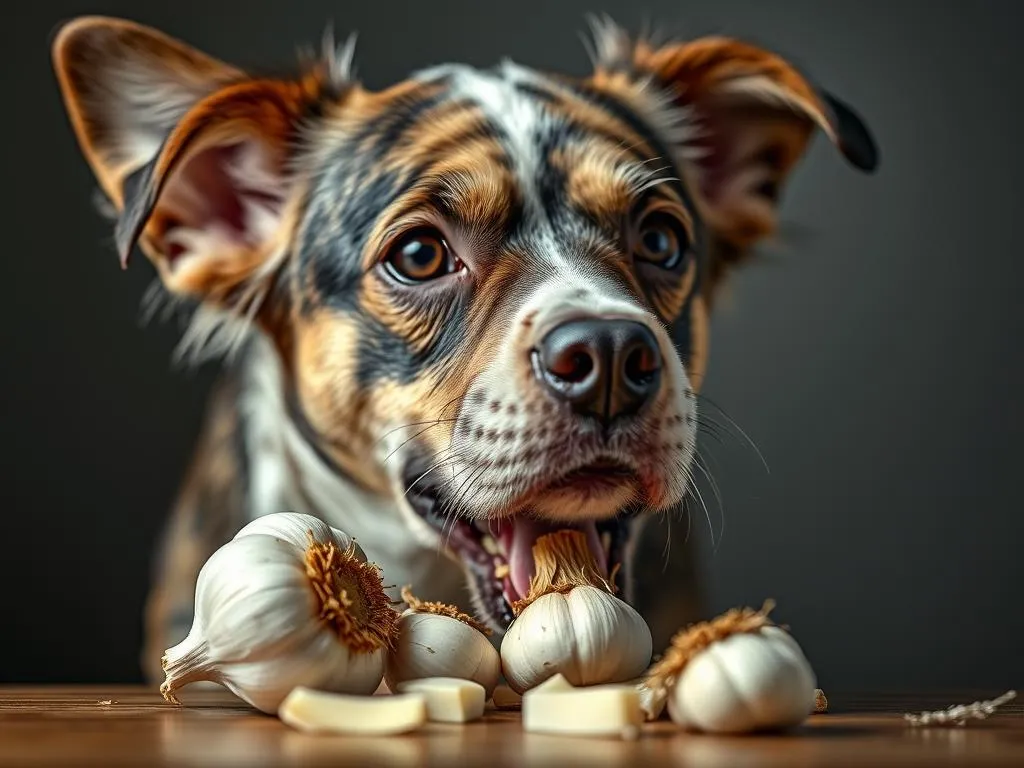
Introduction
Good dog nutrition is crucial for the overall health and well-being of your furry friend. A balanced diet provides the essential nutrients that dogs need for energy, growth, and maintenance of bodily functions. Common dietary components include proteins, fats, carbohydrates, vitamins, and minerals, each playing a unique role in a dog’s health.
In this article, we will focus on a specific question that many dog owners ask: can dogs eat garlic? Garlic is a popular ingredient in many human dishes, known for its flavor and potential health benefits. However, it’s vital to understand what is safe for our canine companions, as their nutritional needs differ significantly from ours.
Understanding Dog Nutrition
Essential Nutrients for Dogs
Dogs, like humans, need a variety of nutrients to thrive. Here are the four essential categories:
-
Proteins: Vital for growth and maintenance of tissues. Proteins are made up of amino acids, which are the building blocks for muscles, skin, and other vital structures.
-
Fats: Provide a concentrated source of energy and are necessary for absorbing fat-soluble vitamins. They also support healthy skin and coat.
-
Carbohydrates: While not essential, carbohydrates can provide a quick source of energy and are often included in dog food.
-
Vitamins and Minerals: These are crucial for various bodily functions, including bone health, immune function, and metabolic processes.
Common Dog Food Ingredients
When selecting dog food, it’s important to understand the ingredients:
-
Meat and Meat By-products: High-quality protein sources. Look for whole meats as the first ingredient.
-
Grains: Can be a good source of carbohydrates and fiber. However, some dogs may have sensitivities to certain grains.
-
Vegetables and Fruits: These provide essential vitamins and minerals, along with fiber for digestive health.
The Role of Supplements
Sometimes, dogs may require additional nutrients that aren’t sufficiently provided by their regular diet. This is where supplements come into play:
-
When to Consider Supplements: If your dog has specific health issues or dietary restrictions, supplements may help fill the gaps.
-
Popular Supplements for Dogs: Omega-3 fatty acids for skin health, glucosamine for joint health, and probiotics for digestive support are commonly used.
The Risks of Human Foods for Dogs
Common Human Foods That Are Toxic to Dogs
It’s important to be aware that many human foods can be harmful or even fatal to dogs. Some of the most common toxic foods include:
- Chocolate: Contains theobromine, which is toxic to dogs.
- Grapes and Raisins: Can cause kidney failure.
- Onions and Chives: These can damage red blood cells, leading to anemia.
The Concept of ‘Safe’ Human Foods
Some human foods may be safe in moderation, but it’s important to monitor your dog’s reactions. Foods like carrots, apples, and peanut butter can be healthy treats, but always consult your veterinarian before introducing new foods.
Garlic and Its Effects on Dogs
What is Garlic?
Garlic, a member of the onion family, is commonly used in cooking for its distinctive flavor and potential health benefits. It contains compounds like allicin, which is thought to have antimicrobial properties. However, its nutritional components can pose a risk to dogs.
How Garlic Affects Dogs
The primary concern with garlic is the presence of thiosulfate, a compound that is toxic to dogs. Here’s how it affects them:
-
Toxicity: When ingested, thiosulfate can lead to oxidative damage to red blood cells, resulting in hemolytic anemia.
-
Symptoms of Garlic Poisoning in Dogs: Symptoms may include vomiting, diarrhea, weakness, lethargy, and even more severe reactions like difficulty breathing.
Safe Quantity of Garlic for Dogs
There is debate among pet owners and veterinarians regarding the safety of small amounts of garlic. Some argue that tiny quantities can be beneficial, while others strongly advise against it. It’s essential to recognize that most veterinary experts recommend avoiding garlic entirely in your dog’s diet.
Veterinary opinions vary, but caution is the best approach. If you’re considering incorporating garlic into your dog’s diet, a conversation with your veterinarian is crucial.
Expert Opinions and Research
Veterinary Perspectives
Many veterinarians warn against feeding dogs garlic, regardless of the quantity. Some veterinarians, like Dr. Karen Becker, emphasize the potential risks associated with garlic consumption and recommend focusing on safer alternatives for flavoring dog food.
Current Research Findings
Scientific studies have shown that garlic can indeed lead to toxicity in dogs. Research findings indicate that even small amounts can accumulate over time and lead to health issues. While some studies suggest potential benefits of garlic, the consensus is that the risks outweigh the rewards, especially when there are safer alternatives available.
Alternatives to Garlic for Dog Owners
Safe Flavoring Options
There are numerous herbs and spices that are safe and can enhance the flavor of your dog’s food without the risks associated with garlic. Consider these options:
- Parsley: Freshens breath and is a source of vitamins.
- Basil: Has anti-inflammatory properties.
- Mint: Another good breath-freshening herb.
Using these alternatives can provide flavor without compromising your dog’s health.
Homemade Dog Food Recipes
If you’re considering making homemade dog food, here are a few simple recipes that avoid garlic while ensuring balanced nutrition:
-
Chicken and Rice: Cooked chicken breast, brown rice, and peas make a nutritious meal.
-
Beef and Sweet Potato: Lean ground beef, cooked sweet potatoes, and carrots provide essential nutrients.
-
Fish and Quinoa: Cooked fish, quinoa, and spinach create a protein-rich meal.
When preparing homemade meals, always ensure you’re balancing nutrients and consulting with a veterinarian for optimal dietary guidance.
Conclusion
In summary, the dangers associated with garlic for dogs cannot be overstated. While it is a common ingredient in human cuisine, it is best kept out of your dog’s diet. Understanding dog nutrition and providing a balanced diet rich in safe, nutritious foods is key to ensuring your dog’s health and happiness. Always consult with a veterinarian for tailored advice regarding your dog’s nutritional needs and dietary choices.
Frequently Asked Questions (FAQs)
Can dogs have garlic if it’s cooked?
Even cooked garlic contains thiosulfate, which is harmful to dogs. It’s best to avoid garlic entirely to ensure your dog’s safety.
What should I do if my dog accidentally eats garlic?
If your dog has ingested garlic, monitor them for symptoms like vomiting or lethargy. Contact your veterinarian immediately for advice and potential treatment.
Are there any health benefits of garlic for dogs?
While some claim garlic has health benefits, the risk of toxicity generally outweighs any potential advantages. It’s safer to use other herbs that are known to be beneficial for dogs.
What should I include in my dog’s diet for optimal health?
A well-balanced diet should include high-quality proteins, healthy fats, appropriate carbohydrates, and a variety of vitamins and minerals. Always consult with a veterinarian for personalized dietary recommendations.









